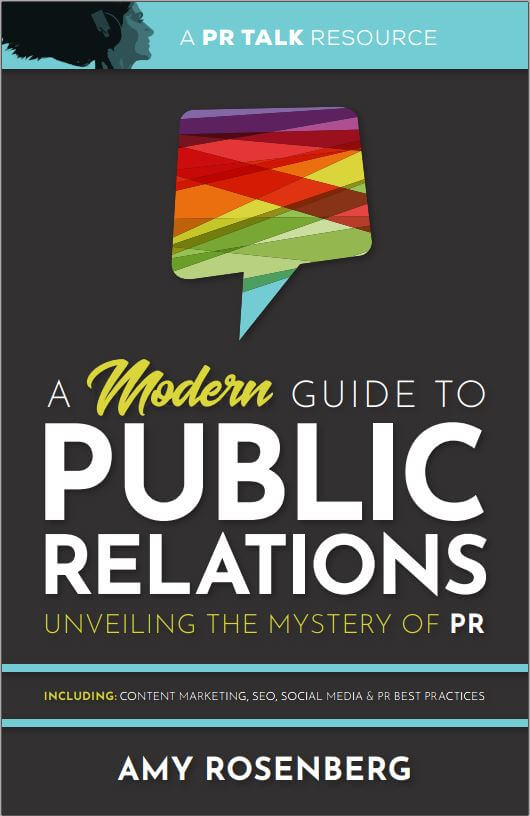Thought leadership has become a powerful marketing tool in a competitive media landscape. Once upon a time, public relations professionals worked primarily with the media to highlight their client’s work, opinions or objectives. While this type of outreach is still an important component of PR work and also a type of thought leadership, organizations can now use digital platforms like blogs, social media and podcasts to bypass legacy media and talk with their customers directly. While thought leadership may have once been considered a vanity exercise, it can now serve as the hub of your marketing work and drive many of its most important goals.
5 Marketing Goals Supported by Thought Leadership
Thought leadership as a marketing tool encompasses many different content types, including speaking engagements, podcast appearances, articles written for other publications and articles written for your own website. Each of these avenues reach unique audiences that can benefit your business in different ways. Depending on your organization’s marketing goals, you can build a thought leadership strategy that carefully selects opportunities and creates content expressing your organization’s best work or ideas in ways that are appropriate for both the audience and modality. The goals are nearly limitless but could include high-impact wins that lift the entire organization.
1. Attracting Clients
Every organization needs a steady supply of new clients to grow and thrive. You’ve likely already identified who these people or businesses are. However, finding and converting them is always challenging. Thought leadership as a marketing and public relations tool uses your knowledge to find opportunities to display your expertise where potential new clients will see, hear or read it. And because thought leadership content is often more in-depth and deliberate than other forms of marketing, it has the potential to be more impactful when the right person consumes it.
2. Building Credibility
One essential component of attracting clients is demonstrating your ability to solve their problems. When potential clients consume thought leadership content, they’ll gain an understanding of your capabilities and key differentiators in ways that are often more difficult to express in other marketing forms. A well-crafted thought leadership strategy can also use outlets like trade publications or conferences to build credibility within industries you’d like to target or with your own colleagues and competitors.
3. Increasing Awareness
As you use thought leadership to attract new clients and build credibility, you’ll begin seeing an increase in brand awareness. Clients, competitors and potential partners will recognize what you do, what makes you different and even who you’ve worked with. High brand awareness is critical for attracting direct traffic to your business or referrals from previous clients or strategic partners. Once you’ve made a name for yourself, people will begin seeking you out because they already know you can help.
4. Highlighting Employees
One audience that too often goes overlooked is your team. But during a time when employee retention is a critical business function, finding new ways of recognizing and rewarding your existing staff can help avoid costly turnover. People often assume that thought leaders have to be executives. However, that approach ignores the deep knowledge managers and frontline workers possess.
Opening up thought leadership opportunities to a broader group of employees demonstrate how much you value their role in your organization and your commitment to helping them develop their careers. As you produce more inclusive thought leadership content, your employees’ peers and job-seekers will also see it and recognize the potential that exists for them in your organization.
5. Developing Partnerships
Thought leadership can also help your organization develop strategic partnerships with other like-minded companies. Guest blogging opportunities or appearing on podcasts can help partner organizations access each other’s audience for mutual benefit. As these marketing partnerships develop, future business opportunities may emerge, including collaborations, referrals and more.
Putting the Pieces Together
Rather than being a boastful exercise that props up the reputation of an individual, thought leadership can instead become the framework powering a holistic marketing strategy. By using available opportunities like blogging, podcasting and speaking engagements, your organization can share carefully designed content with strategically valuable groups, spurring them to action. When those desired actions connect to strategic marketing goals like attracting clients, building credibility or improving employee retention, your thought leadership plan will inevitably deliver impactful results.
Move the Marketing Needle
The digital revolution gave every company a platform they can use to reach their stakeholders. There are no more intermediaries or gatekeepers preventing you from sharing your messages. However, using that power strategically and effectively will make the difference between moving the needle or screaming into the void. Thought leadership could just be the solution you need to achieve your most important marketing goals.









